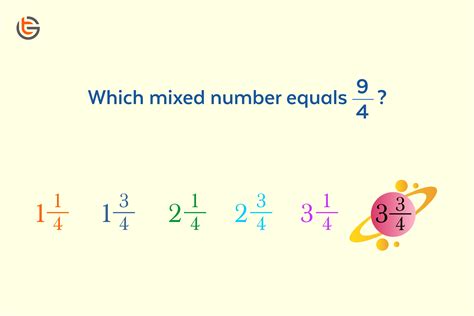13 12 As A Mixed Number
Kalali
Apr 01, 2025 · 4 min read

Table of Contents
13/12 as a Mixed Number: A Comprehensive Guide
Understanding fractions and how to convert them into mixed numbers is a fundamental skill in mathematics. This comprehensive guide will delve into the process of converting the improper fraction 13/12 into a mixed number, explaining the concept in detail and providing practical examples. We’ll also explore related concepts and offer tips for mastering fraction manipulation.
What is a Mixed Number?
A mixed number combines a whole number and a proper fraction. A proper fraction is one where the numerator (the top number) is smaller than the denominator (the bottom number). For example, 1 ½, 2 ¾, and 5 ⅓ are all mixed numbers. They represent a quantity greater than one.
What is an Improper Fraction?
An improper fraction, on the other hand, has a numerator that is greater than or equal to its denominator. Examples include 7/4, 13/12, and 22/5. These fractions represent a quantity greater than or equal to one.
Converting 13/12 to a Mixed Number
The improper fraction 13/12 represents thirteen twelfths. To convert it into a mixed number, we need to determine how many whole units are contained within 13/12 and what fraction is left over.
The Process:
-
Divide the numerator by the denominator: We divide 13 by 12. 13 ÷ 12 = 1 with a remainder of 1.
-
The quotient becomes the whole number: The quotient, 1, becomes the whole number part of our mixed number.
-
The remainder becomes the numerator of the proper fraction: The remainder, 1, becomes the numerator of the fraction.
-
The denominator remains the same: The denominator, 12, stays the same.
Therefore, 13/12 as a mixed number is 1 1/12.
This means that 13/12 represents one whole unit and one-twelfth of another unit.
Visual Representation
Imagine you have 13 slices of pizza, and each pizza is cut into 12 slices. You can make one complete pizza (12 slices) and have one slice left over. This visually represents 1 1/12.
Practical Applications
Understanding how to convert improper fractions to mixed numbers is crucial in various real-life situations:
- Measurement: If you measure 13/12 feet of fabric, it's easier to understand this as 1 foot and 1/12 of a foot (or 1 inch).
- Cooking: Recipes often require fractional amounts of ingredients. Converting improper fractions to mixed numbers can simplify measurements.
- Construction: Accurate measurements are vital in construction. Converting fractions helps in precise calculations.
- Data Analysis: Representing data using mixed numbers can provide a more intuitive understanding of the information.
Further Exploration: Working with Fractions
Let's expand our understanding of fractions by exploring related concepts and techniques.
Adding and Subtracting Fractions
When adding or subtracting fractions, it's often easier to work with mixed numbers. However, remember to convert mixed numbers back into improper fractions before performing calculations. Then, convert the result back to a mixed number if necessary.
Example: Add 2 1/4 and 1 3/4
- Convert to improper fractions: 2 1/4 = 9/4; 1 3/4 = 7/4
- Add the improper fractions: 9/4 + 7/4 = 16/4
- Simplify and convert to a mixed number: 16/4 = 4
Multiplying and Dividing Fractions
Multiplying and dividing fractions can be performed directly, but converting to improper fractions often simplifies the process, especially when dealing with mixed numbers. Remember to convert back to mixed numbers if the result is an improper fraction.
Example: Multiply 1 1/2 by 2/3
- Convert to improper fractions: 1 1/2 = 3/2
- Multiply: (3/2) * (2/3) = 6/6
- Simplify: 6/6 = 1
Equivalent Fractions
Remember that equivalent fractions represent the same value. For example, 1/2, 2/4, 3/6, and 6/12 are all equivalent fractions. Understanding equivalent fractions helps in simplifying calculations and comparing fractions.
Simplifying Fractions
Simplifying or reducing fractions involves dividing both the numerator and the denominator by their greatest common divisor (GCD). This simplifies the fraction to its lowest terms. For example, 12/18 can be simplified to 2/3 by dividing both numerator and denominator by 6.
Tips for Mastering Fractions
- Practice Regularly: Consistent practice is key to mastering fractions. Work through various problems involving addition, subtraction, multiplication, and division.
- Use Visual Aids: Diagrams and visual representations can help solidify your understanding of fractions and mixed numbers.
- Break Down Complex Problems: Break down complex fraction problems into smaller, more manageable steps.
- Check Your Work: Always check your answers to ensure accuracy.
Conclusion
Converting 13/12 to a mixed number, resulting in 1 1/12, is a fundamental skill in mathematics with broad applications. Understanding this conversion process, along with a strong grasp of other fraction concepts, is essential for success in various fields. By practicing regularly and utilizing visual aids, you can master fraction manipulation and confidently tackle more complex mathematical problems. Remember the importance of simplifying fractions and choosing the most efficient method for solving problems based on the specific context. This will not only improve your accuracy but also save you time and effort in the long run. Consistent practice and a clear understanding of the underlying principles will make you proficient in working with fractions and mixed numbers.
Latest Posts
Latest Posts
-
Cuantos Son 40 Grados Fahrenheit En Centigrados
Apr 02, 2025
-
Differentiate Between Extrusive And Intrusive Rocks
Apr 02, 2025
-
How Do You Write A Congruence Statement
Apr 02, 2025
-
What Is The Relationship Between Electron Affinity And Atomic Radius
Apr 02, 2025
-
What Is 44 50 As A Percent
Apr 02, 2025
Related Post
Thank you for visiting our website which covers about 13 12 As A Mixed Number . We hope the information provided has been useful to you. Feel free to contact us if you have any questions or need further assistance. See you next time and don't miss to bookmark.
